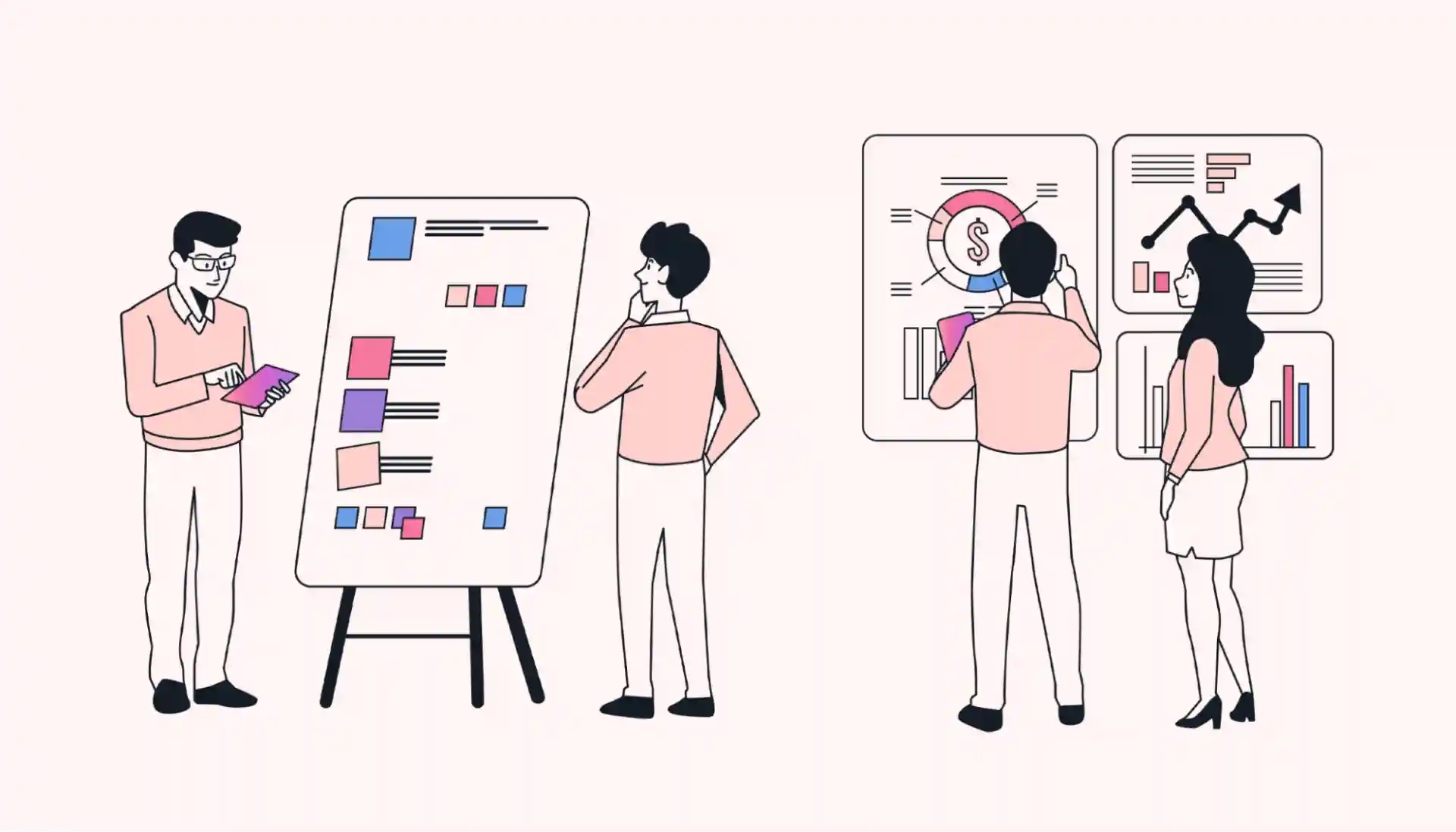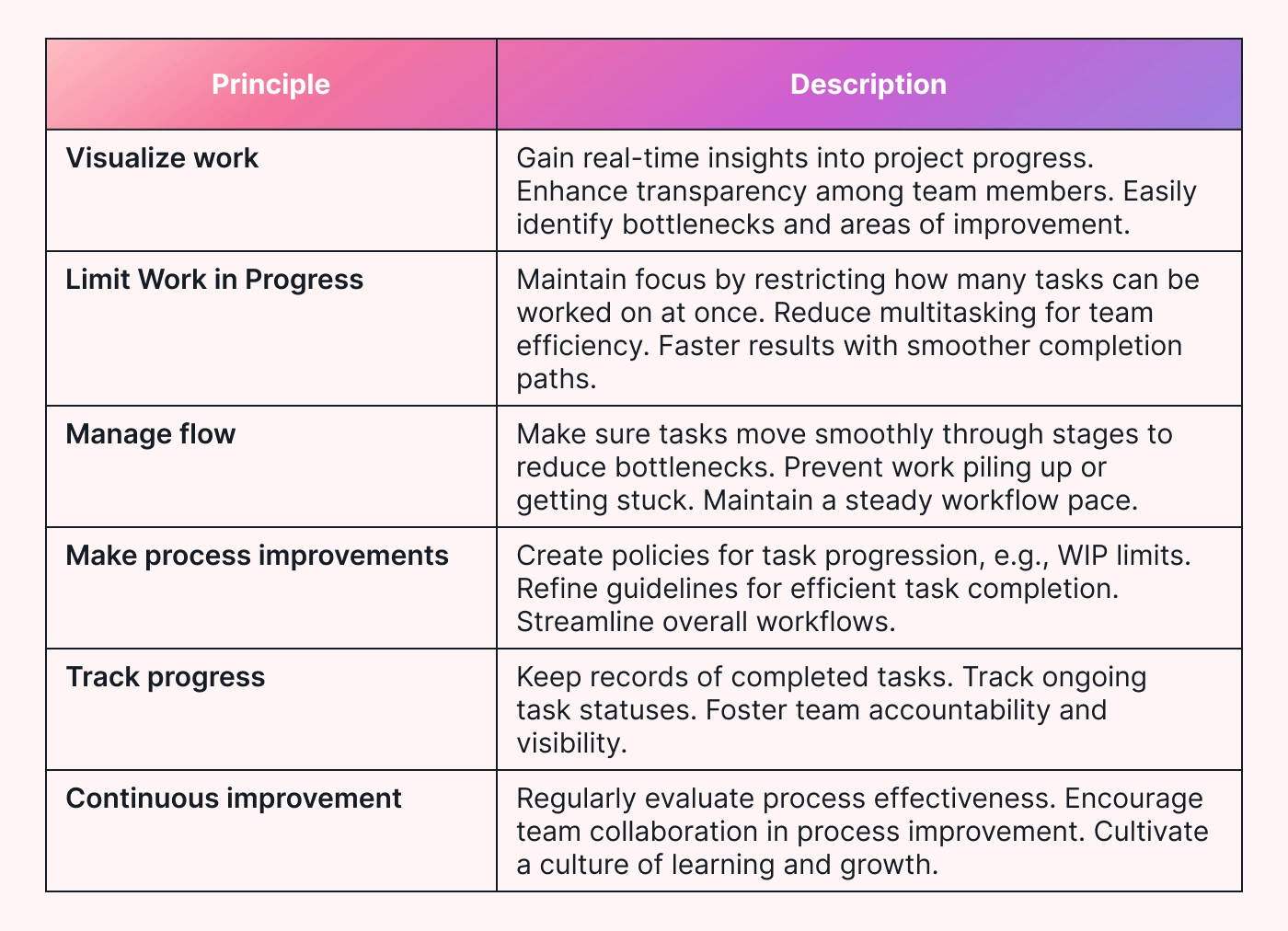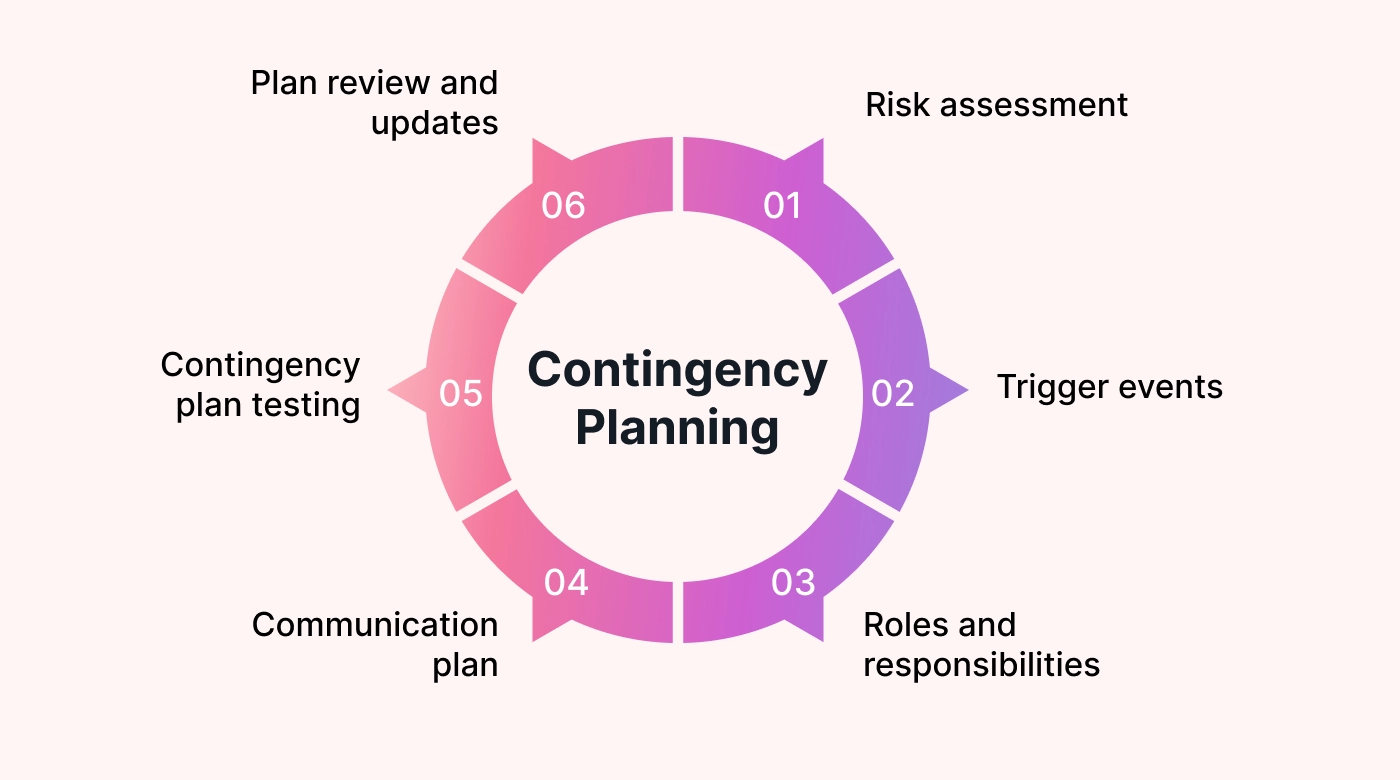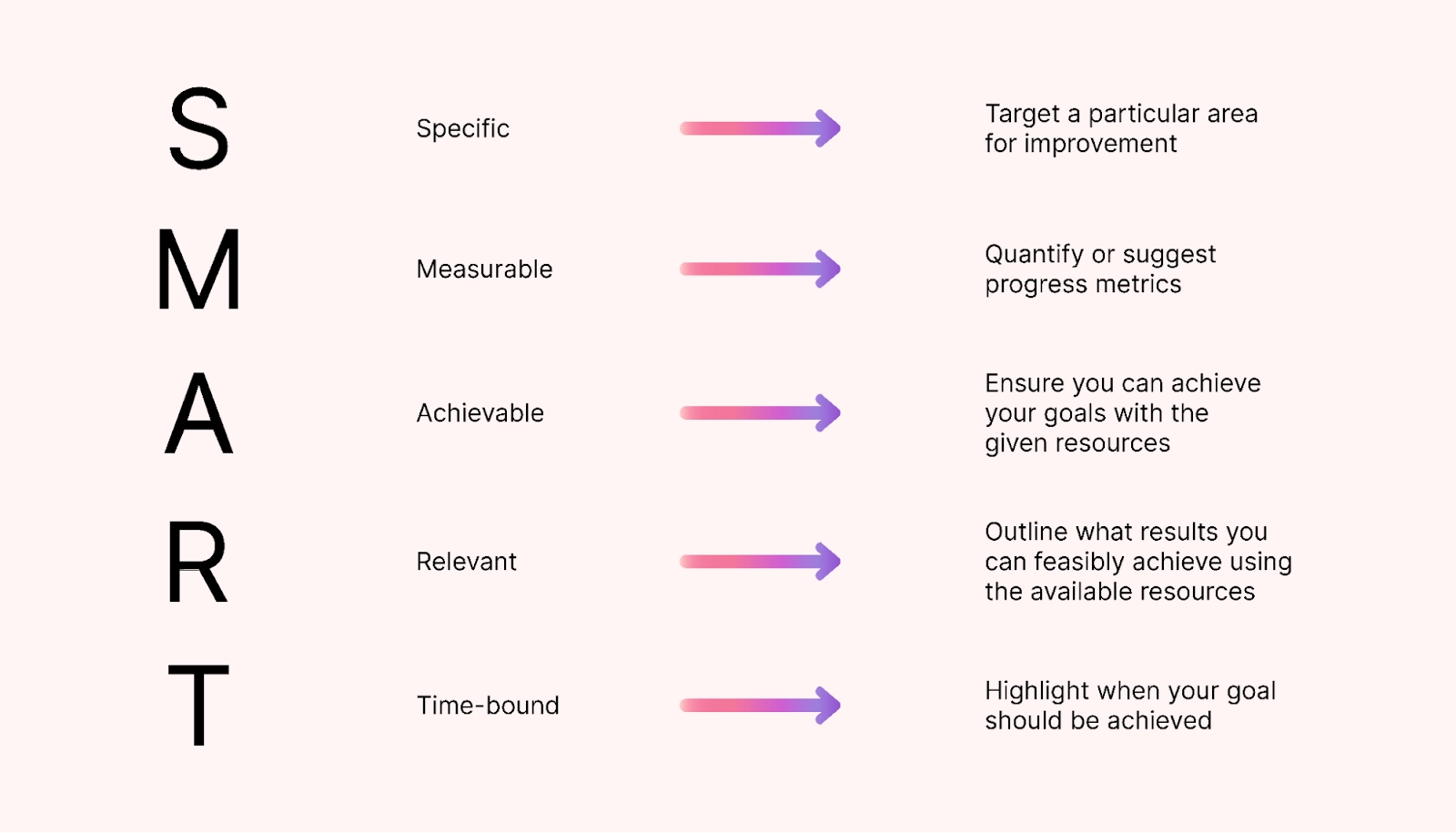Stuck in project chaos? You're not alone.
Did you know that a staggering 39% of projects fail due to poor planning? It's a common challenge, but there's hope!
Enter proactive planning — the secret risk management ingredient for tackling issues before they ever arise.
In this article, we'll examine how proactive planning can work wonders for you. Whether you're managing a team or running your own business, a proactive mindset might be the key to increasing your chances of success (be it for a project or your business).
What are the four types of planning?
While this article will be focusing on proactive planning, it’s good to be aware that there are four primary types of planning:
- Reactive planning
- Inactive planning
- Preactive planning
- Proactive planning
Each of these has implications for how strategic planning happens in your business and, ultimately, how successful your projects are.
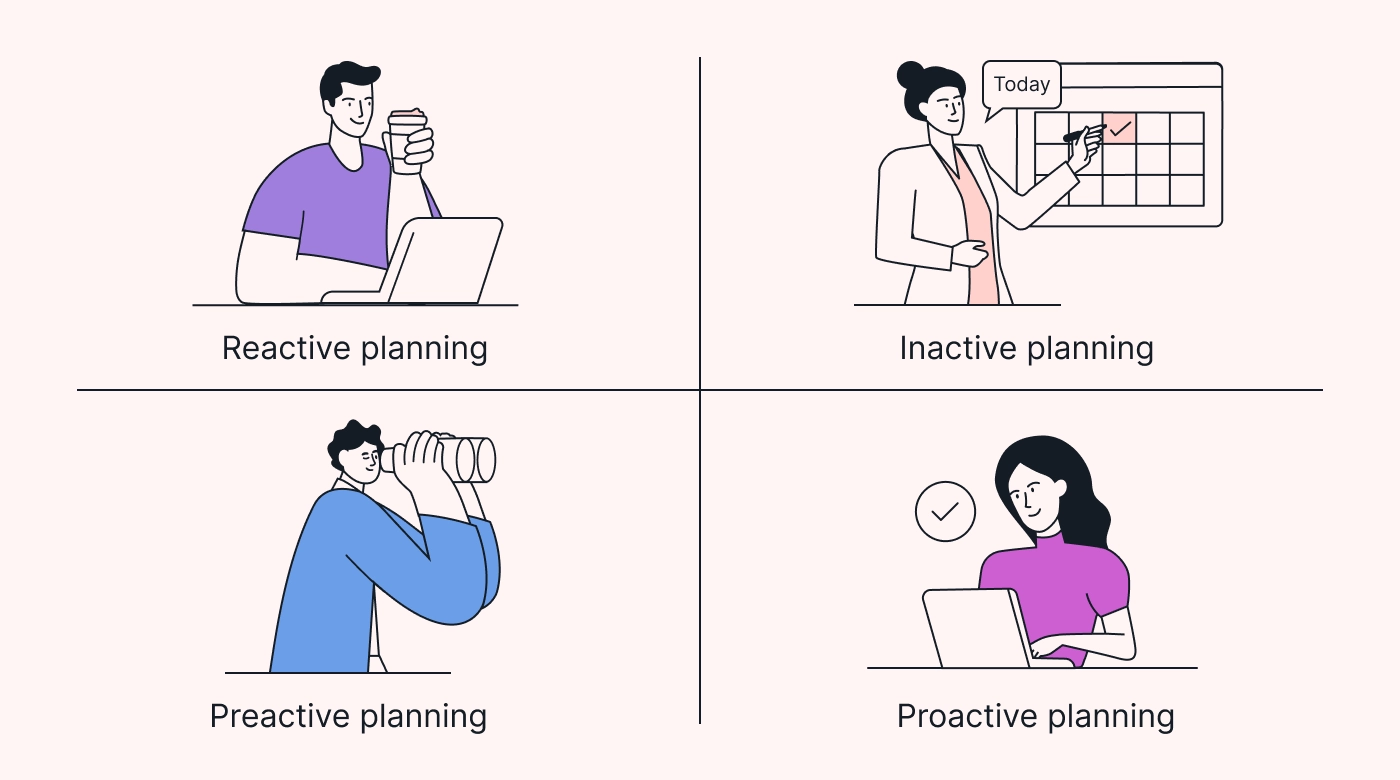 |
Maybe you'll even recognize them from how your internal teams manage long-term planning.
Reactive planning
Reactive thinking and planning is characterized by responding to events or situations after they've occurred, usually without any prior preparation.
If you’re planning reactively in your business, you might notice that you’re in a perpetual cycle of putting out fires rather than preventing them.
But what does this look like in action? It might not be a catastrophic problem that causes you chaos. It could be something as simple as not seeing a trend coming.
Imagine a small retail store that experiences a sudden surge in customer demand during the holiday season. The store quickly runs out of popular products without preparation, causing frustrated customers and lost sales. In a reactive response, the store scrambles to restock inventory and adjust staffing levels to meet demand.
By overcorrecting, they’ve moved from one problem to another: from having insufficient stock to too much that they can’t sell. This reactive approach sets off a chain reaction that can be hard to overcome.
Inactive planning
Inactive planning involves minimal or no deliberate effort to plan for the future. If you’re practicing inactive planning, you may operate daily without considering long-term goals or strategies.
Think about a small local restaurant run by a family for many years. They're great at cooking delicious meals and serving regular customers (but don't think about the future). They don't plan to grow or improve their business in the long run. Instead, they focus on getting through each day.
Because they’re not thinking ahead, they miss out on chances to try new menu items or reach out to more people in the neighborhood. And they're caught off guard when something unexpected happens, like new restaurants opening nearby or people’s tastes changing.
Without long-term planning, they waste opportunities, run into problems, and struggle to keep up with changes in their world. That’s what happens when you don’t plan — it’s like sailing without a compass.
Preactive planning or contingency planning
When you think about strategic planning to manage risks in advance, that's preactive or contingency planning. Essentially, you're making a concerted effort to consider alternative strategies for specific scenarios.
If X happens, we'll do Y and Z to minimize its impact.
This isn't a passive kind of planning. It involves careful forecasting of potential risks and then developing strategies to manage them.
Imagine a small farm preparing for an upcoming hurricane season. Instead of waiting for a storm to hit, they proactively plan for it. They stock up on supplies, reinforce their homes, and establish evacuation routes. By anticipating potential challenges, like flooding or power outages, they can adapt their operations and reduce the storm's impact.
Proactive planning
A proactive approach involves taking deliberate actions to shape the future according to desired outcomes.
Think of a small bakery aiming to expand its business in a crowded neighborhood. Instead of waiting for things to happen, they look for opportunities for growth. They look around, noticing new trends and what their competitors are doing. Then, they make a plan. They introduce new flavors, improve their marketing, and even offer delivery services.
By being proactive, they stay ahead of the game. They don’t just react to what’s happening (negatively or otherwise) — they shape their future. This approach helps them stand out, attract customers, and grow their business.
In this article, we’ll break down proactive planning and show how it helps businesses stay ahead, capitalize on opportunities, and reach their goals.
Whether navigating through daily traffic or steering your organization toward success, understanding these four types of planning can make all the difference. And by embracing proactive thinking and planning, you’re not just along for the ride — you’re driving towards your goals with purpose and confidence.
Why is proactive planning important?
It’s about more than just avoiding chaos. Some of its other benefits include:
Seizing opportunities
An adage in project management states that risk management is how grown-ups manage projects.
And did you know that there is such a thing as a positive risk? It's called an opportunity.
Capitalizing on opportunities before competitors do is a key element of proactive management and planning.
For example, a café owner might proactively introduce a new seasonal menu to attract customers during peak tourist seasons, knowing it will suit the seasonal crowd.
 |
Think of Starbucks’ seasonal menus — pumpkin spice lattes, anyone?
Agility
Agility is also a proactive management and planning benefit, where you continuously adapt better to external factors, changing market conditions, and consumer preferences.
For instance, a boutique owner might regularly review and update their product offerings to stay relevant and meet evolving customer demands.
A study found that 71% of surveyed businesses that adopt Agile methodologies feel that it improves their project delivery.
One way to do so is to try Scrum, a popular Agile framework that can help you see improvements in your own projects by:
- Working in short iterations, or sprints, to deliver value incrementally rather than all at once in one final project delivery
- Meeting more often but for less time, in regular ceremonies to keep tasks moving and remove any roadblocks early.
Making planning a positive experience makes it easier to get buy-in and find time for setting strategic goals.
Encouraging innovation
You can foster innovation through a proactive approach by continuously seeking new ways to improve your products or services.
For example, a technology startup might work to create cutting-edge solutions that outpace competitors by meeting needs users didn’t even know they were missing.
Think about how companies like Apple and Lego constantly innovate to set industry trends and create their own opportunities (and drive growth) over decades.
Proactive planning sets you up to navigate unexpected challenges while maximizing opportunities.
Key elements of proactive planning
Imagine having the foresight that equips you to navigate daily life confidently. That’s the power of proactive planning.
Crucial steps to master proactive thinking and planning include:
Goal-setting and forecasting
Start by looking ahead and trying to predict what might happen in the future, like a startup, for example, setting targets to reach a certain amount of sales within a specific time.
Risk assessment
It’s important to consider what could go wrong and how it might affect your business. Risk management and planning gives you peace of mind and ensures you’re prepared in advance if something goes wrong.
Continuous improvement
To stay ahead of risk and competition, you must continuously improve your work and planning process. As you know, no two days in business are the same, and your workflow should reflect this.
Try using a visual tool like a Kanban board where your whole team can view your plans being executed task-by-task and adapted as you go.
Continuous learning and improvement is at the core of Kanban. Regularly evaluate your planning practices and watch as your team begins to anticipate issues before they ever become a problem.
By incorporating these key elements into their proactive planning approach, you can better prepare for the future, minimize risks, and maximize opportunities for the future.
How to implement proactive planning in your projects
Planning a path to success might not always be easy, but the process is simple:
Set clear goals
Define specific, measurable objectives for your project. For example, if you're a small business owner launching a new product, your goal might be to achieve a certain number of sales within the first quarter.
Anticipate risks
Identify potential obstacles that may arise during the project lifecycle. For instance, if you're a project manager overseeing a construction project, anticipate issues like adverse weather conditions, unexpected events or material shortages.
Develop contingency plans
Once you've identified potential challenges and risks, develop contingency plans to address them proactively. This could involve securing backup suppliers for critical materials or establishing alternative work schedules to accommodate unexpected delays.
Regularly review progress
Schedule regular check-ins to assess progress towards your project goals. As a business owner, you might hold weekly meetings with your team to review sales figures and adjust marketing strategies accordingly.
Stay flexible
Remain flexible and open to adjustments as needed. Circumstances may change, requiring you to adapt your plans accordingly. For example, if customer feedback indicates a need for product improvements, be prepared to make the necessary changes.
Continuously improve
Learn from past projects and incorporate lessons learned into future planning efforts. This iterative approach protects the ongoing improvement and refinement of your planning processes.
3 pro tips for mastering proactive planning
Staying informed is essential to navigate the twists and turns of uncertainty. But what does it take to truly master strategic foresight?
1. Set SMART goals
Your planning goals should be:
- Specific
- Measurable
- Achievable
- Relevant, and
- Time-bound.
For example, if you’re a marketing agency, plan smarter and stay ahead with SMART campaign goals.
Here's how:
Get specific: Define clear targets. For example, increase client numbers by 20% in the next three months or increase CTR to 15%
Measure progress: Keep tabs on your numbers weekly. Check how your campaigns are performing and adjust as needed.
Make it achievable: Be realistic. Consider your resources and what you can realistically accomplish in the given time frame.
Stay relevant: Connect your goals to your agency's bigger picture and consider where you want to go as a business.
Set deadlines: Give yourself clear timelines. When do you want to hit those targets? Keep yourself accountable.
2. Encourage collaboration
Start by scheduling regular team meetings to gather insights from all of your team members. Even those who aren’t directly working on client accounts.
Say you’re an accounting firm. Encourage your tax specialists, admin staff, and other team members to share their perspectives on improving processes in your business from the first client touchpoint to the final delivery of your client’s returns.
In these meetings, you might want to start by brainstorming specific steps to streamline tax preparation, as this is typically your busiest time of year.
Your tax experts might suggest adopting a cloud-based software that gives you remote access to client software directly. At the same time, administrative staff could propose digitizing client documents so you can go paperless. Better yet, you should integrate these systems to make your workflow seamless.
Next, collaboratively outline a clear workflow, assigning responsibilities to each team member to make these changes a reality.
Ensure you have open communication channels for ongoing feedback and updates, such as shared project management tools, a Kanban board, or regular check-ins.
By actively involving everyone and implementing solutions together, your accountancy firm will foster collaboration proactively, leading to easier planning for the next tax season.
3. Data-driven decision making
If you're running a digital agency, like a website development company, and want to make smarter decisions using data.
Start by getting organized with project management software. Use an AI-driven project assistant to keep track of tasks and deadlines.
Assign responsibilities to team members so everyone knows what they're doing and when.
Gather data from different places. Talk to clients to get feedback on your work. Keep an eye on your project budgets to see where the money is going. Look at market research reports to understand what's happening in your industry.
Then, use this data to make better decisions. If clients say they love a certain feature on their website, consider using it more often for other clients.
Proactive planning is as much about seeing opportunities and trends as it is about anticipating issues. Don’t miss out on your business’ potential because you’re too busy looking down rather than ahead.
Motion: Your partner in proactive planning
Tired of project headaches bogging you down? It's time to try Motion — the ultimate assistant for planning your projects.
Use Motion’s task manager to assign your SMART tasks to your team. Then watch as it reschedules tasks as schedules change, mitigating the risks of deadline overruns for you.
With Motion’s project dashboard, you can track progress in real-time and use previous project data to improve your workflows for your next project.
Seamless teamwork, well-organized tasks, and a clear roadmap to victory — all in one convenient platform. What’s not to love?
So, why wait? Dive into Motion today and watch your projects soar to new heights. Try the difference with Motion today!

Haylee is a versatile writer with ten years of experience. With a background in marketing and writing for large SaaS companies, Haylee brings her passion for the written word to diverse projects ranging from blog posts and ebooks to direct marketing campaigns.


